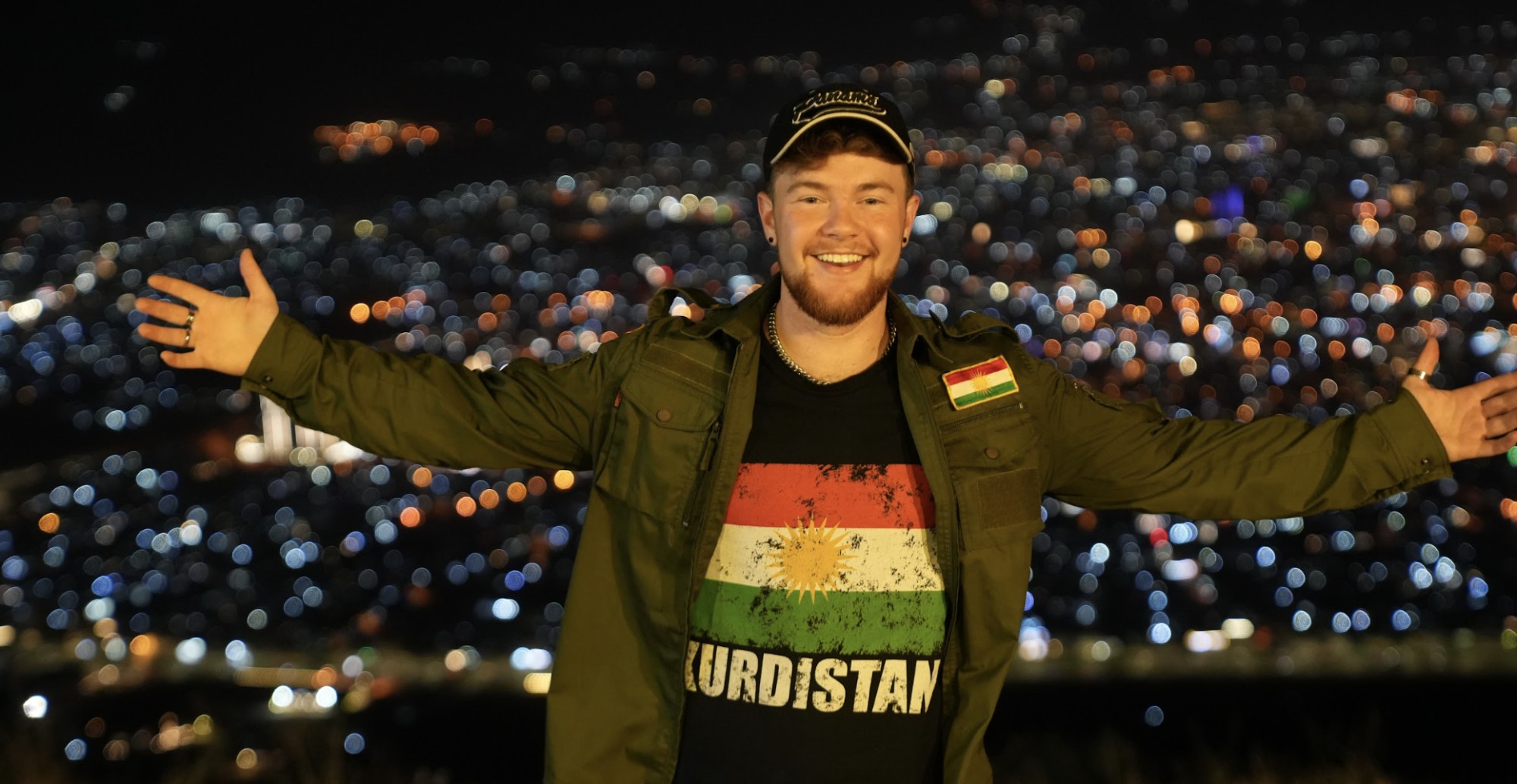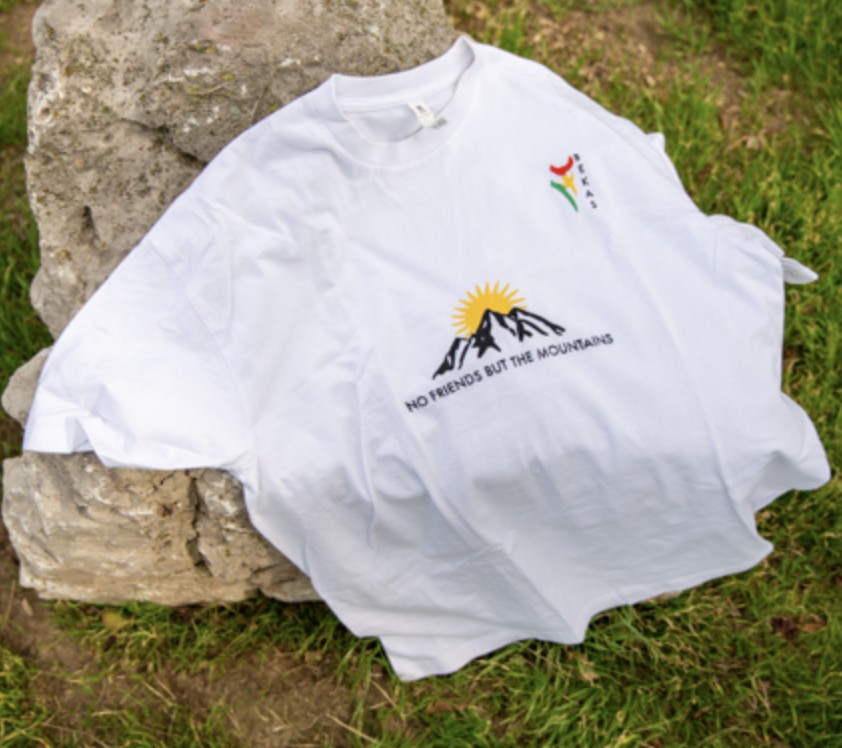The World’s Columbian Exposition, held in Chicago in 1893, remains a landmark event in 19th-century history. This prestigious expo, which presented innovations in fields like economics, culture, and science, holds significance for the Kurdish community due to the remarkable performance of a Kurdish play titled Kurds and Kurdistan (Ottoman Kurdistan). This ahistorical event offers valuable insights into the early trajectory of Kurdish theater and invites artists and scholars to revisit its shared past.
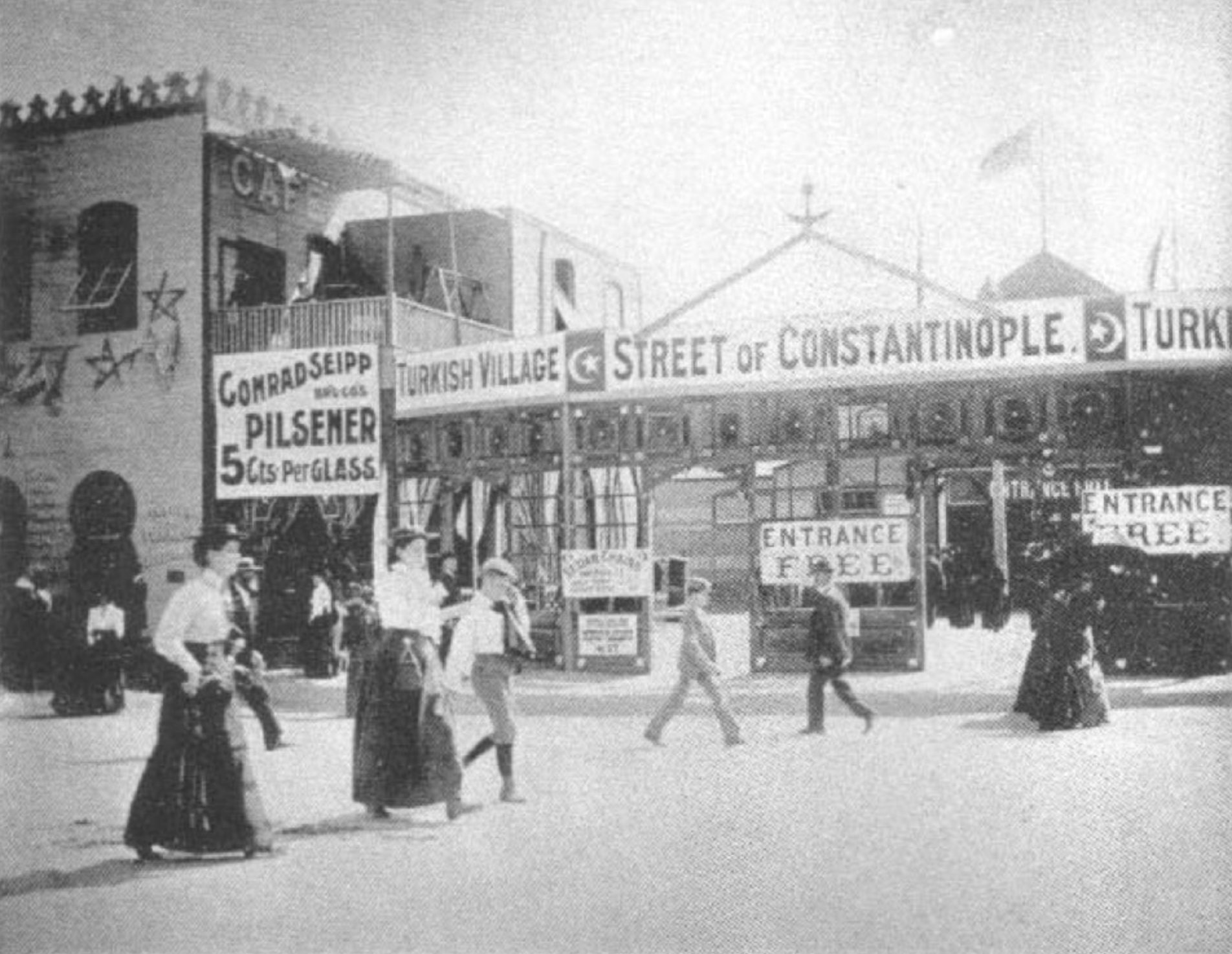
Commemorating Columbus, showcasing diversity
Marking the 400th anniversary of Christopher Columbus’ voyage to the Americas, the United States hosted the Chicago International Exhibition, which attracted the participation of nations far and wide. The Ottoman Empire, with a significant Kurdish and Druze representation, joined the event. The Ottoman exhibition featured a restaurant, cafe, theater, and several musical groups.
The official invitation, extended in February 1891, led to the Ottoman Empire forming a commission tasked with creating an “Ottoman village” for the expo. Saadullah Efendi, an owner of an import business at the time, was put in charge of the project, while Jewish engineer Robert Louis Levy designed the village, which included a mosque, theater, and banquet hall that could accommodate 2,500 guests. Notably, the theater had to adhere to specific rules, as plays deemed offensive to Muslim women or Ottoman national dignity were prohibited.
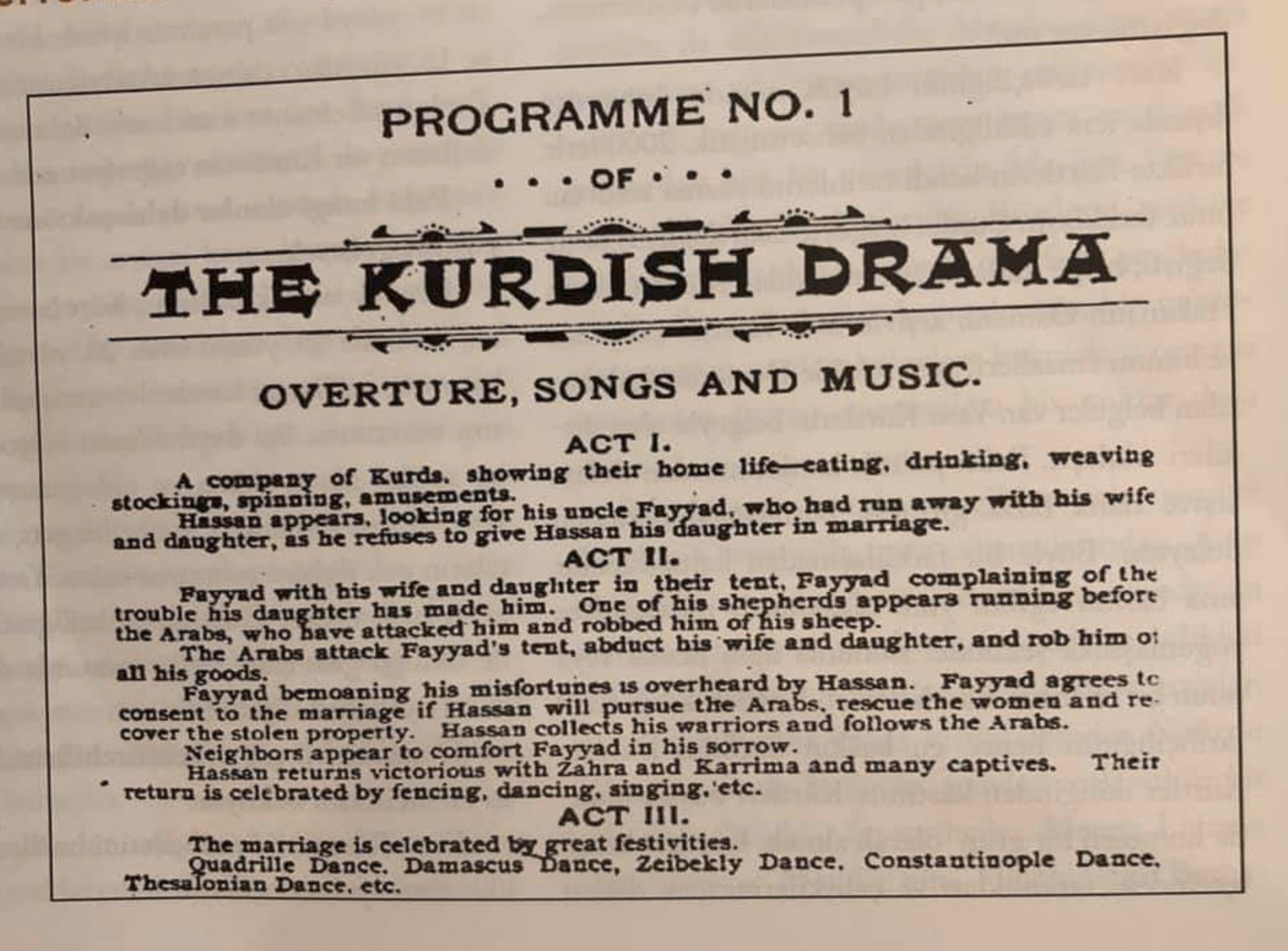
This occasion marked the Ottoman Empire’s debut in an international theater exhibition. Notably, Lebanese Christian artist Pierre Butros Antonius oversaw the participating troupes, recruiting 65 actors from across the empire, including several Kurds. Unfortunately, information about their specific origins remains unavailable.
The Scrapbook of the World’s Columbian Exposition, preserved in Chicago archives, sheds light on the diverse ethnicities within the Ottoman delegation. It differentiates Kurdish actors from Druze counterparts based on their turbans and labels the Kurdish group’s performance as “The Kurdish Drama.” The magazine provides a synopsis of the play:
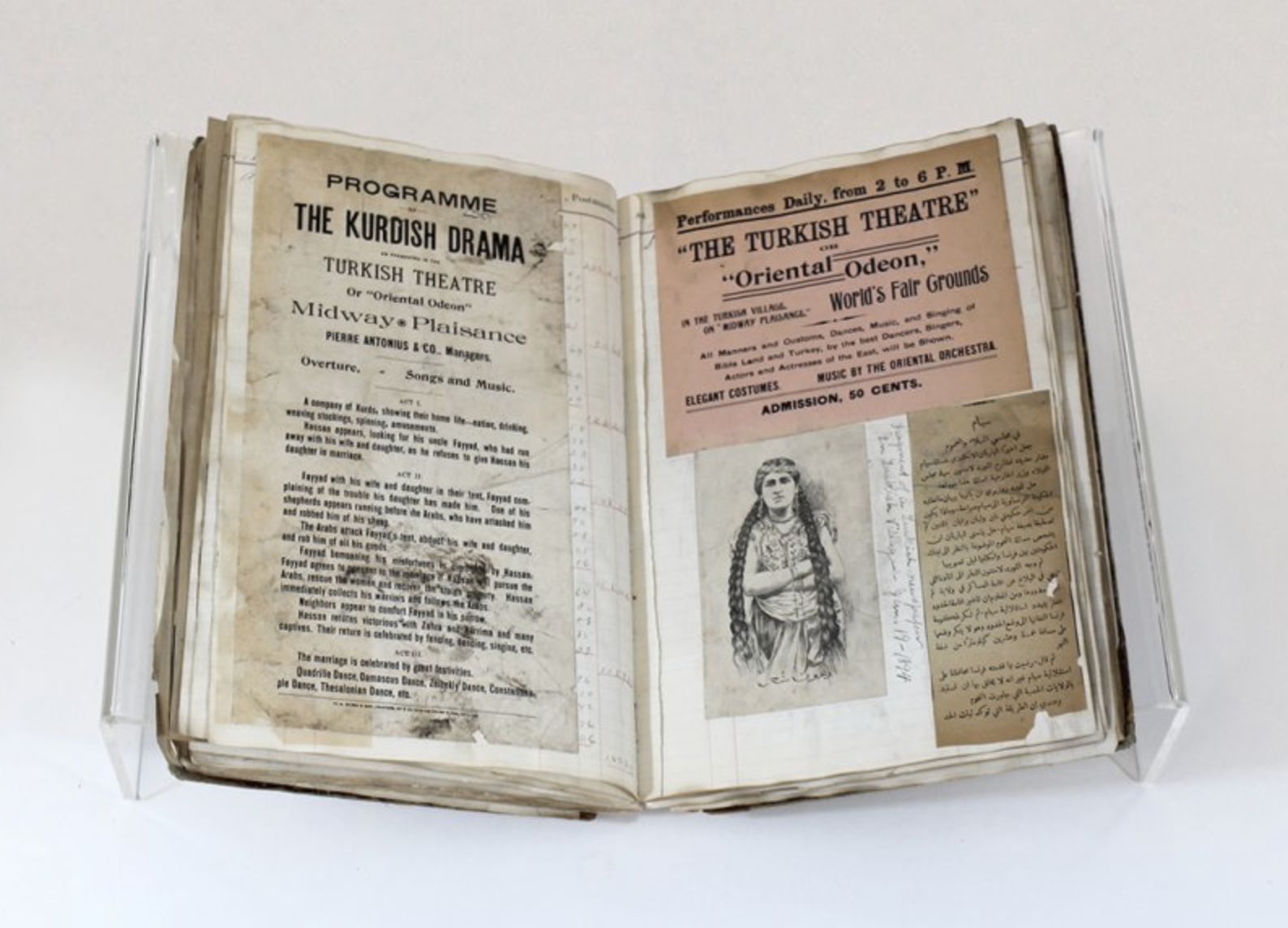
OVERTURE, SONNG AND MUSIC
ACT I.
The play opens with a company of Kurds showcasing their daily lives, including eating, drinking, weaving stockings, spinning, and other amusements. Hassan appears, looking for his uncle Fayyad, who has run away with his wife and daughter, as he refuses to give Hassan his daughter in marriage.
ACT II.
The second act opens with Fayyad, in his tent with his wife and daughter, complaining of the trouble that his daughter has made for him. One of his shepherds appears out of nowhere, pursued by a group of Arabs, who have attacked him and stolen his sheep. The Arabs attack Fayyad´s tent, abduct his wife and daughter, and rob him of all his goods.
While bemoaning his misfortunes, Fayyad is overheard by Hassan and agrees to consent to marry his daughter to Hassan if he catches the Arabs, rescues the women, and recover the stolen property. Hassan collects his warriors and follows through, returning victorious with Zahra, Karima, and many captives. Their return is celebrated by fencing, dancing, singing, and more.
ACT III.
The marriage is celebrated with great festivities and all kinds of dances from the Ottoman Empire, including the Quadrille, Damascus, Zeybek, Constantinople, and Thessalonian.

Beyond the stage
The sizeable Kurdish presence in the exhibition attracted media attention. The same publication provided information about Kurdish culture and geography, such as the following text presenting the traditional clothing of a Kurdish shepherd:
The Shepherd
This is the costume of a shepherd of Kurdistan, which is famous in all the East. The shepherd is large and good with sheep, which can be differentiated from American sheep by their large tails, which weight between 15 and 30 pounds. The sheep get accustomed to following the shepherd as soon as he puts on his felt coat and calls them; if they see the coat, immediately they follow. Oftentimes strangers deceive them by wearing this coat, and they follow them instead. The shepherd has the rod and staff; the former to defend and protect the sheep, the latter to guide them gently. The Prophet David spoke in the Psalms in the language of a shepherd, as in Psalm 23, “Thy rod and thy staff they comfort me.” The shepherd also a sling with which he can hurl stones long distances, the same kind of sling used by the Prophet David when he killed Goliath. For provisions, he uses a sack of kid´s leather to keep it fresh; he smokes a pipe and puts his tobacco in a bag hung in his belt.
Learning about the Ottoman Empire’s involvement in presenting Kurdish theater troupes and plays over 130 years ago raises thought-provoking questions. One wonders how Kurdish language, art, and literature might have evolved had Turkey continued on this path. While history cannot be rewritten, this discovery undeniably establishes the existence of Kurdish theater dating back at least this far in history. This knowledge can serve as a catalyst for further research and exploration of this rich cultural expression.
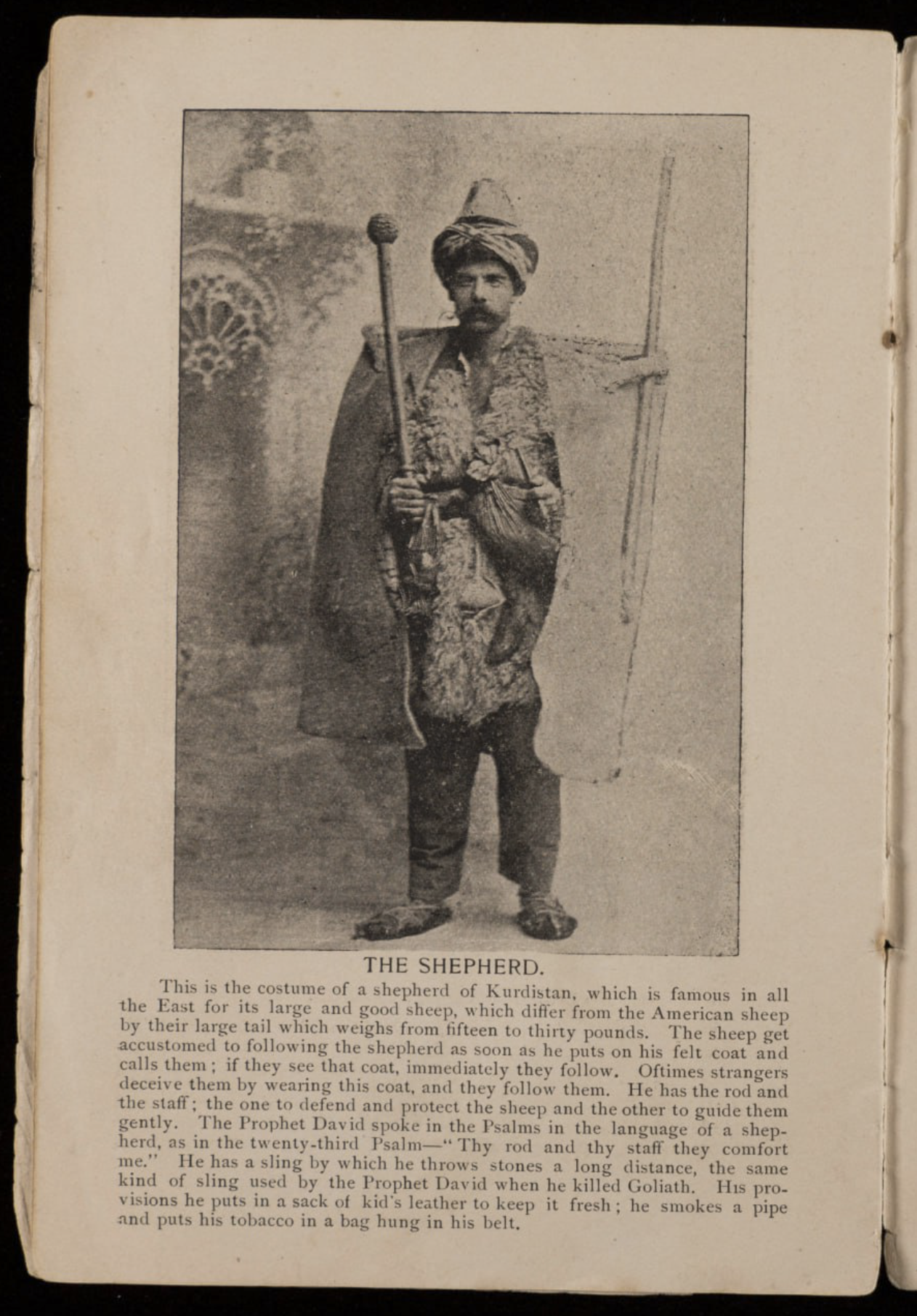
Baker Schwani is a Kurdish writer and translator based in Germany. He has translated several acclaimed novels into Kurdish. Schwani was born in Kirkuk and studied geology in Baghdad before moving to Germany and obtaining a degree in oriental studies at the University of Bonn.
